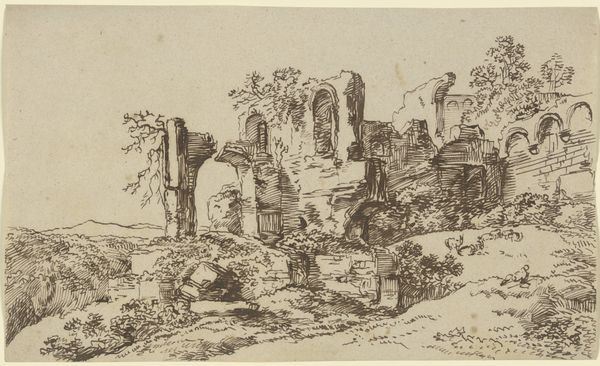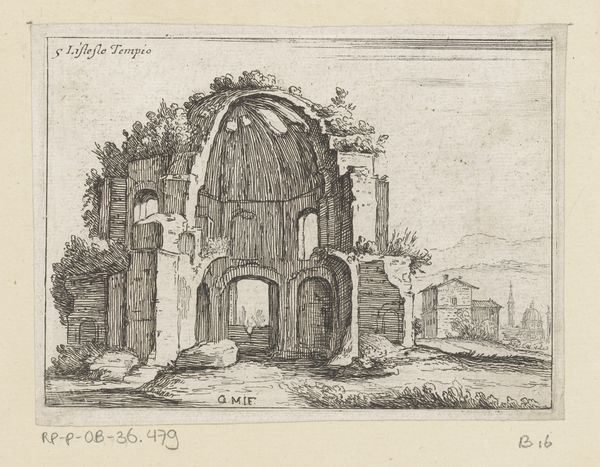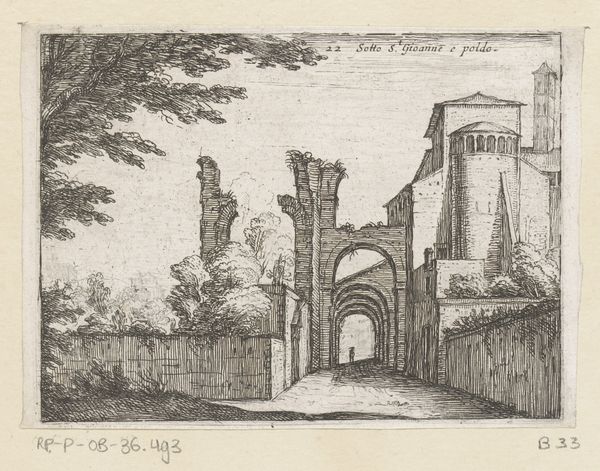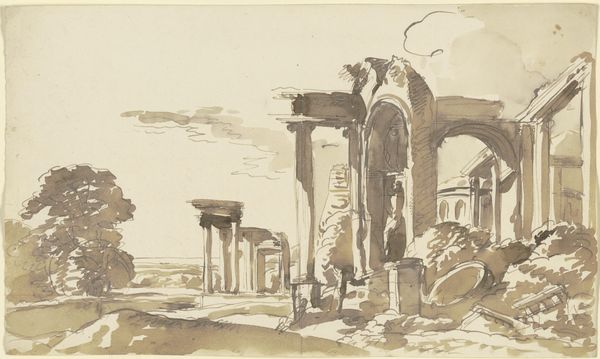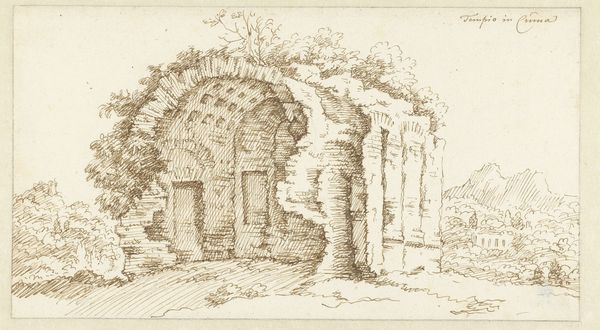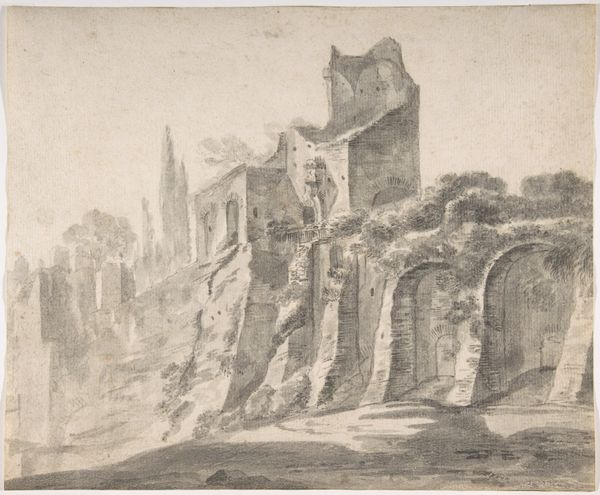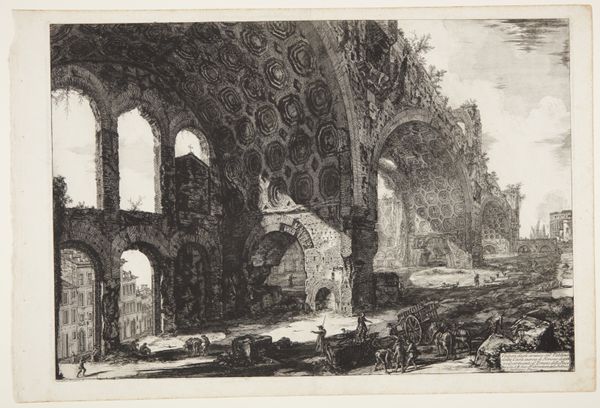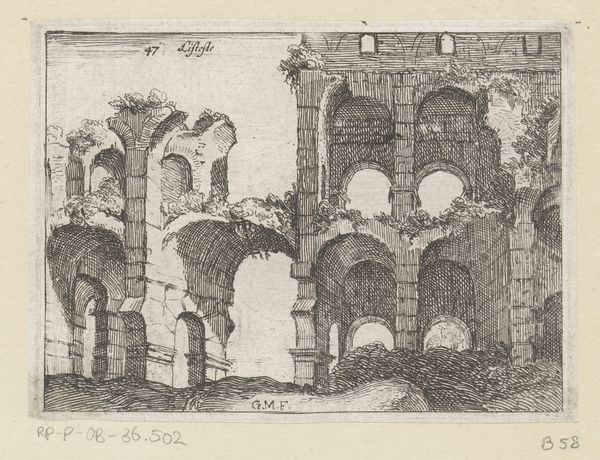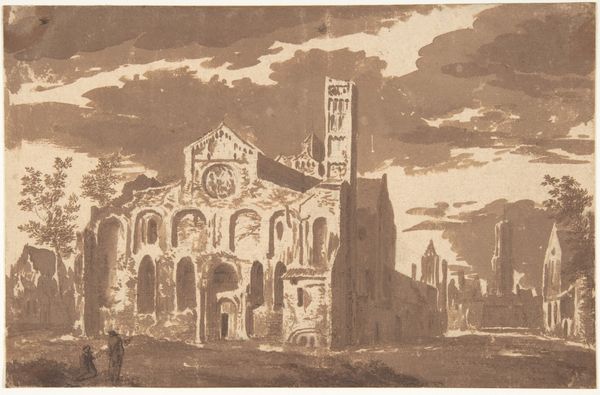
drawing, ink, architecture
#
drawing
#
ink drawing
#
landscape
#
ink
#
ancient-mediterranean
#
15_18th-century
#
line
#
cityscape
#
architecture
Copyright: Public Domain
Editor: This ink drawing is called "Ancient Ruins" by Franz Kobell, but we don't know when it was made. It depicts exactly what the title suggests, with figures inhabiting what seem like old Roman ruins. What stands out is the texture achieved through line work; it's not photorealistic, but quite expressive in its own way. What catches your eye in this work? Curator: I'm particularly drawn to the physical evidence of production visible in the lines. Ink wasn’t as easily sourced and standardized as it is today; where might Kobell have obtained it, and from what raw materials was it composed? Consider, too, how the act of drawing with ink—compared to, say, fresco—was accessible to a wider range of social classes. Does this democratization of artmaking change how we view landscapes in the 18th century? Editor: That's a perspective I hadn't considered! I was more focused on the picturesque qualities and how it feeds into the Grand Tour aesthetic, but thinking about who had access to what materials adds a new layer. So, the choice of ink, even the quality of the ink, speaks to something beyond just artistic preference? Curator: Exactly. And what about the architecture depicted? Were these truly "ancient ruins", or were they carefully constructed follies meant to evoke a sense of history? Who was commissioning these kinds of works, and what was the intended consumption of the image? Was this about personal enjoyment or social status? The social relations behind it all mattered. Editor: So, looking at it through a materialist lens, the drawing becomes less about romantic ruins and more about the labor, access, and social context surrounding its creation and consumption. I'll never look at ink drawings the same way! Curator: Precisely! By focusing on these production and consumption questions, we connect this seemingly simple landscape drawing to larger systems of power and economic exchange operating in 18th-century society.
Comments
No comments
Be the first to comment and join the conversation on the ultimate creative platform.
